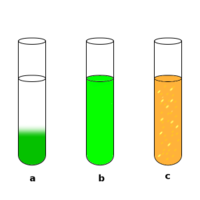
Photo from wikipedia
Estimating the heterogeneity of base and precious metal mineralisation is a great challenge for mining engineers and geologists who undertake resource evaluation, grade control and reconciliation. The calculation of the… Click to show full abstract
Estimating the heterogeneity of base and precious metal mineralisation is a great challenge for mining engineers and geologists who undertake resource evaluation, grade control and reconciliation. The calculation of the minimum broken sample mass to represent a given lot of mineralisation at a given comminution size is based on the estimation of IHL, the constant factor of constitution heterogeneity. IHL can be derived by different heterogeneity testwork or calibration approaches. Three methodologies are well known in the mining industry: the standard heterogeneity test, the segregation free analysis, and the sampling tree experiment or duplicate sample analysis. However, the methodologies often show different results, especially when it comes to gold. These differences are due to many reasons. Assuming the variances added by sample preparation and analysis to be equivalent for all tests, the reasons for the differences may include the nugget effect (particularly the presence of coarse gold), the segregation effect and the procedure of collecting/splitting the samples when performing the tests. This paper analyses and compares two heterogeneity tests: the original heterogeneity test and the simplified segregation free analysis, both performed on mineralisation from different Brazilian operations. The results show clear differences between the tests, highlighting the complexity of estimating the heterogeneity of mineral deposits. The study reports the importance of using proper methodologies for constitution heterogeneity estimation so that minimum sample masses and relative standard deviations of the fundamental sampling error can be relied upon. It also provides recommendations for practitioners on the application of testwork/calibration studies.
Journal Title: Minerals
Year Published: 2023
Link to full text (if available)
Share on Social Media: Sign Up to like & get
recommendations!